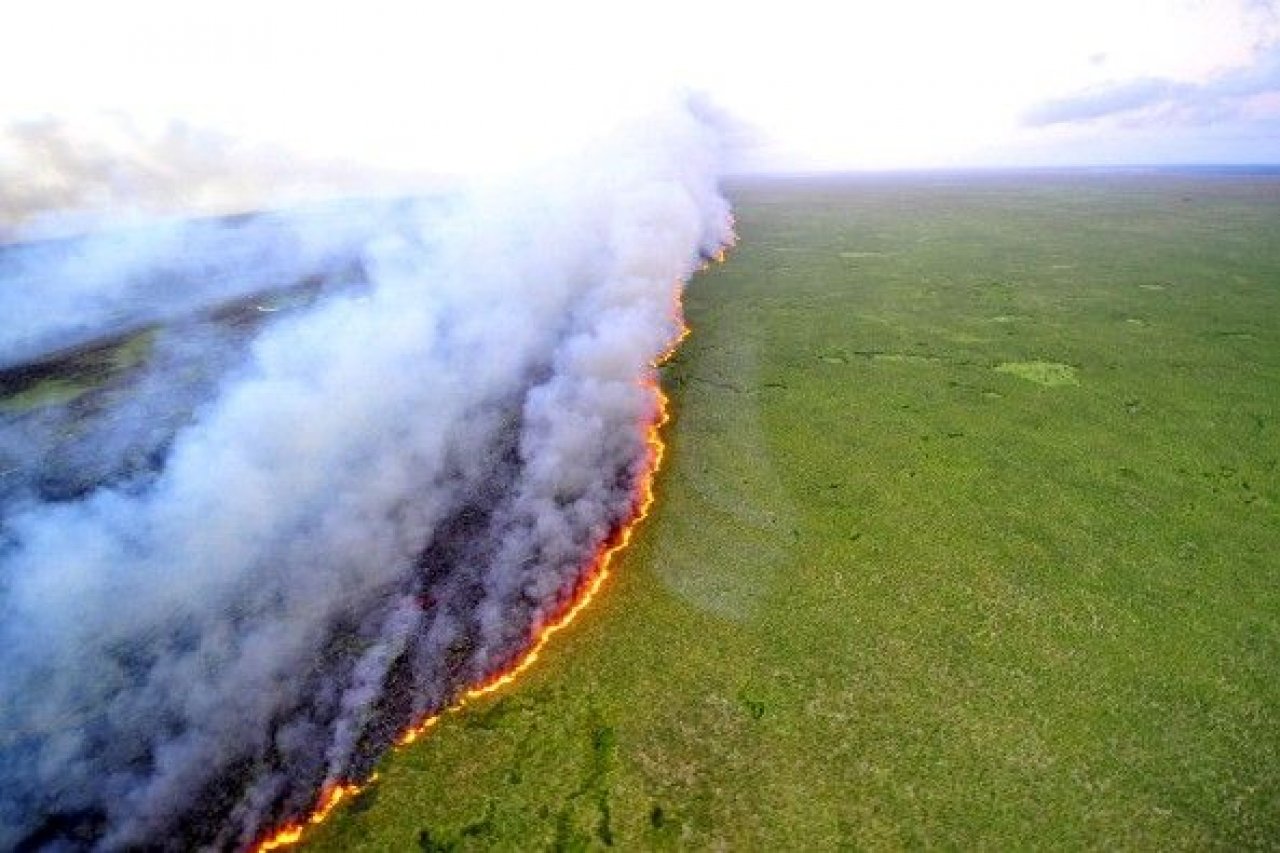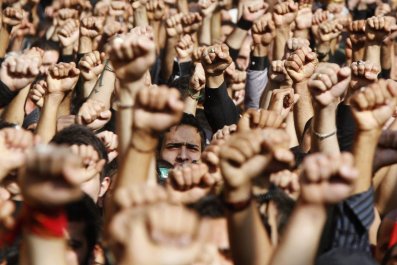Can eating a cheeseburger be considered an act of war? Yes, but only if you understand the delicate and intricate relationship of the many living creatures on Earth.
Consider first the place humans occupy in the food chain ("a hierarchical series of organisms each dependent on the next as a source of food," by one dictionary definition). We think of ourselves as being on top, right? We are not, generally speaking, hunted and consumed by other animals and being humans, we like to think we're king of the hill, A-number-one.
But according to a new study published in the journal Proceedings of the National Academy of Sciences, Homo sapiens are at roughly the same level as pigs and anchovies. If it's any consolation, the report says our species is moving up in the rankings - but that could be seriously bad news for the planet.
Biologists don't really like the term food chain anymore. Chains are linear, while nature is multidimensional, to say the least. Instead they speak of food webs, often with vast numbers of different trophic levels shared by different organisms, like neighbors in a New York high-rise. The living things that used to occupy the bottom of the food chain - algae and multicellular plants - are now said to inhabit "trophic level 1." They are autotrophs, manufacturing their own food through photosynthesis. Trophic level 2 consists of rabbits and other basic herbivores, which get their energy by eating plants.
Simple, right? From there, however, the trophic numbers get complicated. Many species subsist on mixed diets of animal and vegetable protein. Take foxes: If they ate nothing but rabbits, you could call them level 3. Unfortunately, they also eat fruit (remember Aesop's fable about the fox and the grapes?), so their trophic score might be less than a full 3. At the same time, some animals prey on other predators. You might be tempted to call them "trophic level 4" and be done with it - but again, take foxes. Besides eating fruit and herbivores, they also catch and consume level-3 animals like moles and other insectivores.
So how do scientists even begin to crunch the fox's trophic numbers? First they need an army of graduate students and a calculator with plenty of decimal places. Field zoologists are a tough and determined breed. Species by species, they are mapping the global food web, all the way up to the "apex predators" at trophic level 5 (or higher, depending on who's keeping score) - tigers, killer whales, and the like - what everyone once called the top of the food chain.
Science had never settled on a trophic level for humans - until now. It's not easy to quantify the eating habits of the most diverse, widespread, and omnivorous species of all. But the newly published study, led by fisheries scientist Sylvain Bonhommeau of the French Research Institute for Exploitation of the Sea, attempts to change that. Using the most recent data from the United Nations Food and Agriculture Organization, Bonhommeau and his team have estimated that as of 2009, humanity's worldwide median trophic level was approximately 2.21 - "closer to a herbivore than a carnivore," as Bonhommeau told Nature. "It changes the preconception of being top predator."
The worrisome part is what else they discovered: Our global population is growing more and more carnivorous, and that trend threatens to send us off an environmental precipice. Humanity's meat market has more than quadrupled since 1961, from about 70 million tons back then to almost 300 million tons in 2010, according to the FAO. Much of that increase has come from India and China. Those two countries, accounting for about a third of the world's total population, once relied mostly on rice and vegetables to feed their people. Now their booming economies are enabling them to buy meat, and vast tracts of Amazon rainforest are being clear-cut to satisfy the unprecedented demand for corn and soybeans as animal feed.
And that's not all that humanity's appetite for meat is doing to the world. The livestock industry accounts for some 18 percent of global greenhouse gas emissions, according to a 2006 FAO study. Then there's the grain and water it takes to raise cattle. NPR ran the numbers and found that it takes 6.7 pounds of grain and forage and 52.8 gallons of water to produce a single quarter-pound ground-beef patty - hold the pickle, the lettuce and the bun.
And Americans are in no position to wag a finger. Despite the incessant claims on talk shows that they're eating healthier these days, Americans remain among the most voraciously carnivorous people on the planet, devouring 270.7 pounds of meat a year per capita. That's way more than double the world average of 102.5 pounds.
It's worth remembering that we're all part of the food web. If it were a chain, humans might be able to keep up our predatory ways with impunity. But in a web, what goes around is likely to come around.

























